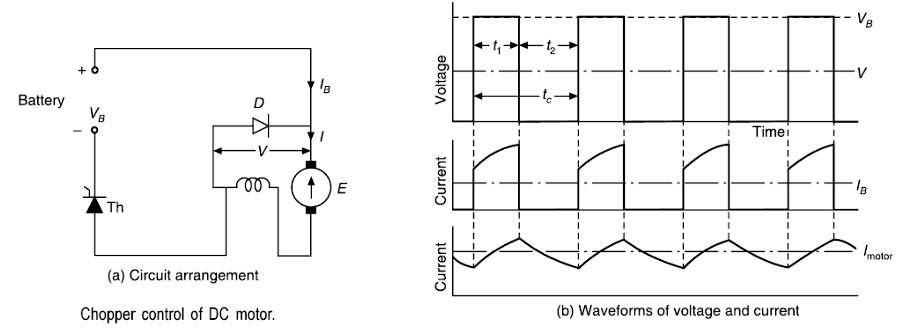Chopper control for DC motor provides variation in
Right Answer is:
Input voltage
SOLUTION
Choppers (DC to DC Converter): A chopper converts fixed dc input voltage to a variable do output voltage. The dc output voltage may be different in amplitude than the input source voltage. Choppers are designed using semiconductor devices such as power transistors, IGBTs, GTOs, Power MOSFETs, and thyristors. The output voltage can be varied steplessly by controlling the duty ratio of the device by low power signals from a control unit. Chopper has either a battery, a solar-powered D.C voltage source, or a line frequency (50- 60 Hz) derived dc voltage source.
The mean output d.c voltage of the chopper is varied by varying its duty cycle δ i.e the Ratio of on-time to periods. The figure shows the voltage and current waveforms of the battery and motor.
Two different techniques time ratio control (TRC) and current-limit control (CLC) is often used to vary the δ of the chopper feeding a d.c. motor. While in TRC the chopping period is fixed and the on-time is varied to control the duty cycle, in CLC δ is varied indirectly by controlling the motor current between certain specified maximum and minimum values. In effect, this type of control is a variable-frequency control, variable on-time and onetime.
The thyristor is used to have an on-off switching cycle. The rectangular pulse of battery voltage is applied to the motor when the thyristor is on. The motor current rises depending on the resistance, inductance, and change in E. During off time, the motor current continues to flow through the diode D. The mean current is approximately proportional to mean voltage and speed.

